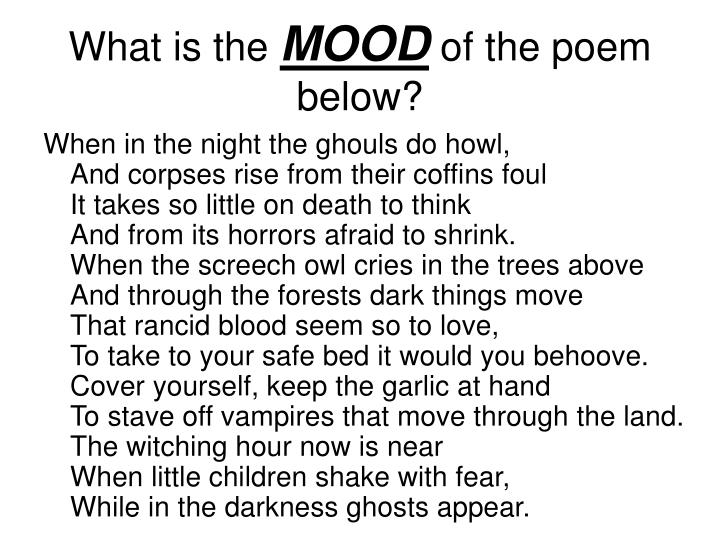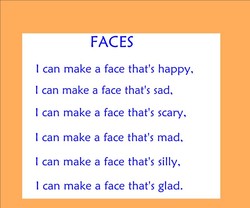
#DIFFERENT MOODS OF POEMS SERIES#
AnaphoraĪnaphora is the act of beginning a series of successive sentences or clauses (sentence fragments) with the same phrase. This allusion shows that the narrator has a high respect for learning. In Edgar Allen Poe’s The Raven, the bird in question is described as “perched upon a bust of Pallas just above my chamber door.” Some of the poem’s readers may recognize Pallas as a reference to Pallas Athena, Greek goddess of wisdom. Sometimes this is simply to draw a parallel that the reader will easily understand, but often allusions are used to hint at something that it would be insensitive, or even dangerous, to directly acknowledge. AllusionĪllusion is where the poet makes an indirect reference to something outside of the poem, whether that’s a real person, a well-known mythological cycle, or a struggle that’s happening in the world we know.

A ”sinking circus,” on the other hand, kicks off each word with the same sound even though they look different on the page. “Cold cider” is not an example of alliteration, because even though the words begin with the same letter, they don’t have the same sound. So are “political power play” and “false friends.”

The “Wicked Witch of the West” is an example of alliteration. Hearkening back to the days when poetry was mostly sung or read out loud, this literary device uses repeating opening sounds at the start of a series of successive words, giving them a lovely musical quality. Here are some of the literary devices you’ll be able to add to your poet’s toolkit: 1. Then you’ll be able to refine them even more to make your poetry the best it can be.

While you’re reading about these elements of poetry, see if you can look back at your own work and find where these poetic devices are already beginning to shine through naturally. All poetry comes from a place within ourselves that recognizes the power of story and song, and writers have formed these devices in poetry over time as a way for us to communicate that with each other. Some of these poetic literary devices you probably already use instinctively. Poetic devices are the literary techniques that give your poetry shape, brightness, and contrast. These poetic devices work on the levels of line-by-line syntax and rhythm, which make your poetry engaging and memorable and they work on the deeper, thematic level, which makes your poetry matter to the reader. Poetic devices are techniques and methods writers use to construct effective poems. Many of the things we’re going to show you in this list of poetic devices are things you’ll probably recognize from other poems and stories you’ve read in the past.

If you read any poetry at all (and if you haven’t, stop reading this, go do that, and come back), you’re probably well on your way. Then they’ll allow them to surface naturally as they put their emotions down onto the page. Many poets will begin learning about the technical literary devices used in poetry, read other poets who have used poetic devices successfully, and practice them in their own work until they become a part of their poet’s voice. The truth is, most poetry will fall somewhere in the middle.
#DIFFERENT MOODS OF POEMS FULL#
The second are those who sit down at a desk/café table/riverside and throw up a beautiful storm of emotions onto the page, creating something so full of shadow and light and color that it could easily be mistaken for a post-impressionist painting or the remnants of a small child’s lunch. The first are those who seek to embrace any and all poetic devices they can find and pile them one on top of the other, creating an architectural marvel not entirely dissimilar to a literary jenga puzzle-also known as Art. Emerging poets tend to fall into one of two camps.


 0 kommentar(er)
0 kommentar(er)
